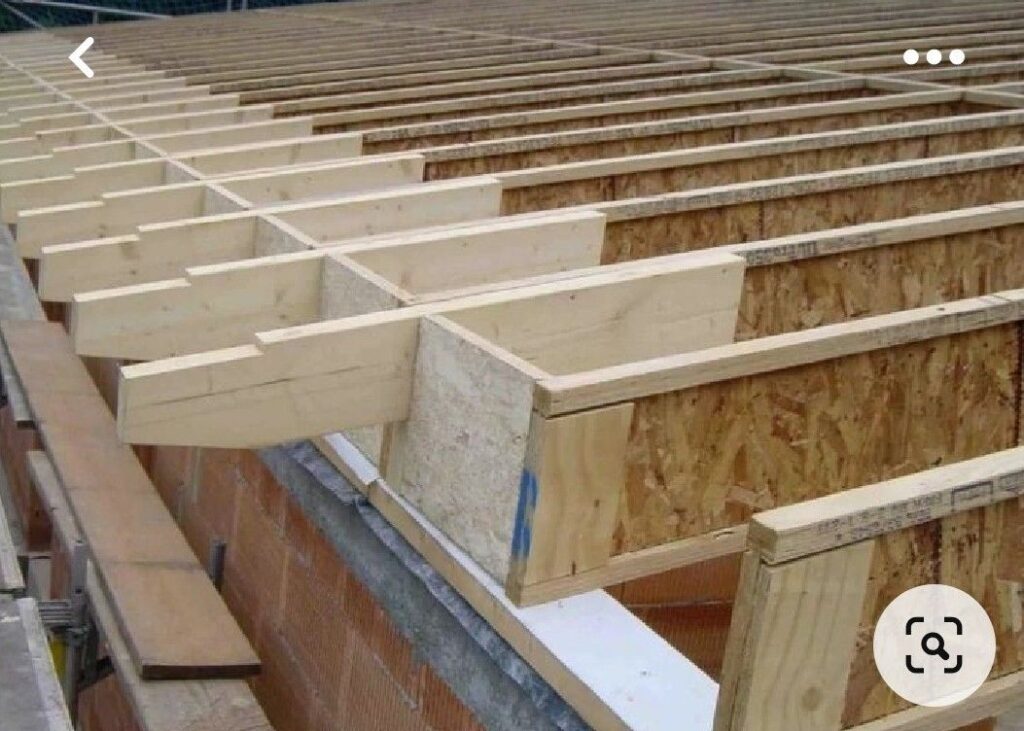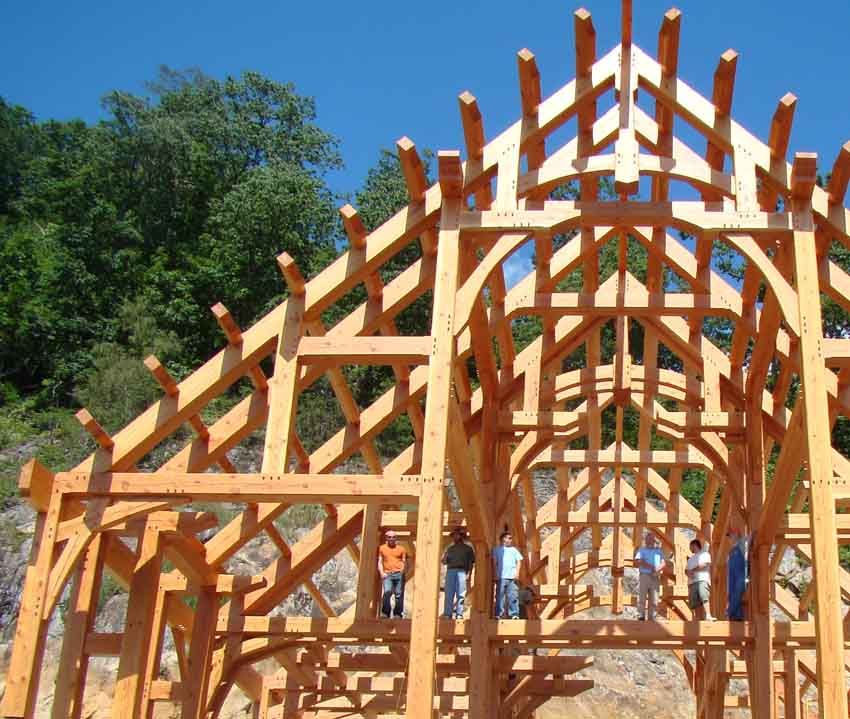In the world of commercial construction, certain structural elements quietly do the heavy lifting, ensuring that buildings stand tall, safe, and functional. Among these unsung heroes are trusses—frameworks of interconnected triangles that distribute loads efficiently across spans. While they may seem like simple geometric shapes, trusses have transformed the way architects and engineers design commercial spaces. From massive warehouses to sleek office buildings, trusses provide the strength, flexibility, and efficiency that modern projects demand. But what exactly makes them so vital in today’s construction landscape?

1. Strength Through Geometry
At the core of every truss is a simple concept: the triangle. Unlike other shapes, a triangle cannot change its shape without altering the length of its sides. This inherent stability means that trusses can bear heavy loads while using far less material than solid beams.
In commercial construction, this translates to incredible spanning power. A well-designed truss can stretch across dozens—or even hundreds—of feet, supporting vast roof structures without the need for excessive support columns. This is especially crucial in commercial settings like:
- Warehouses, which require open floor plans for shelving and machinery.
- Sports arenas and gymnasiums, where large unobstructed spaces are essential.
- Airports and convention centers, where thousands of people move through wide, airy interiors.
By leveraging triangular geometry, trusses provide the backbone for these expansive spaces, ensuring they remain safe and stable under heavy loads.

2. Efficiency in Material Use
Another reason trusses are so important is their material efficiency. Because they rely on the strength of their shape rather than sheer mass, trusses achieve maximum support using minimal material.
This efficiency has several key benefits for commercial construction:
- Cost savings – Less material means lower costs for steel, wood, or other building resources.
- Faster fabrication and installation – Lighter components are easier to handle, reducing labor time and equipment needs.
- Reduced environmental impact – Using fewer raw materials helps meet sustainability goals and lessens the building’s overall carbon footprint.
In large-scale commercial projects, where budgets and environmental considerations are critical, this efficiency is not just beneficial—it’s essential.

3. Enabling Open, Flexible Spaces
Modern commercial design prioritizes flexibility. Businesses need spaces that can adapt to changing uses, whether it’s a warehouse converting into a retail hub or an office building being reconfigured for co-working. Trusses play a crucial role in this adaptability.
Because trusses can span wide distances without intermediate columns, they create vast open interiors. These open layouts allow:
- Retail stores to easily change floor arrangements.
- Event spaces to host a variety of setups without structural limitations.
- Industrial facilities to install or move equipment without obstruction.
Without trusses, designers would be forced to rely on load-bearing walls or dense columns, dramatically limiting how a commercial building could be used—or reused—in the future.
4. Versatility Across Building Types
Trusses aren’t confined to a single type of commercial structure—they are used across the entire spectrum of building designs.
- Steel trusses dominate in large industrial facilities, aircraft hangars, and big-box retail stores.
- Wood trusses are common in smaller commercial projects like restaurants, schools, and offices.
- Hybrid trusses, combining materials like wood and steel, are emerging in creative architectural designs.
This versatility means that no matter the scale or purpose of a building, there’s likely a truss solution that fits. Whether it’s a massive logistics hub or a boutique retail space, trusses offer a flexible framework for innovation.
5. Perfect for Prefabrication
One of the biggest trends in commercial construction today is prefabrication—building components off-site in controlled factory environments, then assembling them on location. Trusses are ideally suited for this method.
Prefabricated trusses offer:
- Consistent quality – Factory production ensures precision engineering and fewer on-site mistakes.
- Faster timelines – Pre-made trusses arrive ready to install, speeding up construction schedules.
- Lower labor costs – With much of the work done off-site, on-site crews spend less time assembling complex frameworks.
This is particularly valuable for commercial projects in urban areas where delays can be expensive and space for on-site fabrication is limited.
6. Essential for Sustainability and Green Building Goals
The future of construction is undeniably green, and trusses are helping lead the way. Because they are material-efficient and adaptable, they align perfectly with sustainability initiatives.
- Material savings mean fewer resources are consumed during construction.
- Compatibility with mass timber allows for carbon-storing, renewable material use.
- Support for green roofs and solar panels makes trusses ideal for buildings aiming for net-zero or LEED certification.
For developers and architects striving to meet stricter environmental regulations, trusses provide an essential tool for achieving performance and sustainability goals without compromising design.
7. Aesthetic Possibilities: Trusses as Design Features
Once hidden behind ceilings and drywall, trusses are now stepping into the spotlight. Modern architects increasingly expose trusses as part of a building’s visual identity.
- Steel trusses create striking industrial aesthetics in loft-style offices, breweries, and event spaces.
- Timber trusses bring warmth and character to restaurants, hotels, and civic buildings.
- Custom designs allow trusses to be sculptural elements, blending engineering with artistry.
In many contemporary commercial projects, trusses are both functional and decorative, turning structural necessity into architectural statement.
8. Durability and Longevity
Commercial buildings represent significant investments, and owners expect them to last for decades. Trusses deliver on that expectation by offering durability and low maintenance.
- Steel trusses, when treated for corrosion resistance, can withstand harsh environments and heavy use.
- Wood trusses built with engineered timber can remain strong and stable for generations.
- Hybrid designs combine the best properties of each material for even greater resilience.
This longevity reduces the need for costly structural repairs or replacements, saving owners money over the life of the building.
9. Adapting to the Future of Smart Construction
Trusses aren’t just static frameworks—they are poised to become part of the smart building revolution.
Future trusses could incorporate:
- Embedded sensors to monitor structural health and detect stress or damage early.
- Integrated systems for lighting, HVAC, or solar energy collection.
- Data connectivity that links the truss to a building’s management system for real-time monitoring.
These innovations will make trusses even more valuable, turning them from simple support systems into intelligent infrastructure.
Conclusion: Why Trusses Matter More Than Ever
Trusses might seem like humble components in the vast field of commercial construction, but their impact is enormous. They provide strength through efficient geometry, enabling massive spans without excessive material. They support flexible, open layouts that meet the needs of modern businesses. They are versatile, working across building types and materials, and they align perfectly with trends like prefabrication, sustainability, and smart technology.
In short, trusses aren’t just part of commercial construction—they’re foundational to its future. Whether hidden within a roof or showcased as an architectural centerpiece, trusses ensure that commercial spaces are not only strong and functional, but also adaptable, efficient, and ready for whatever comes next.


